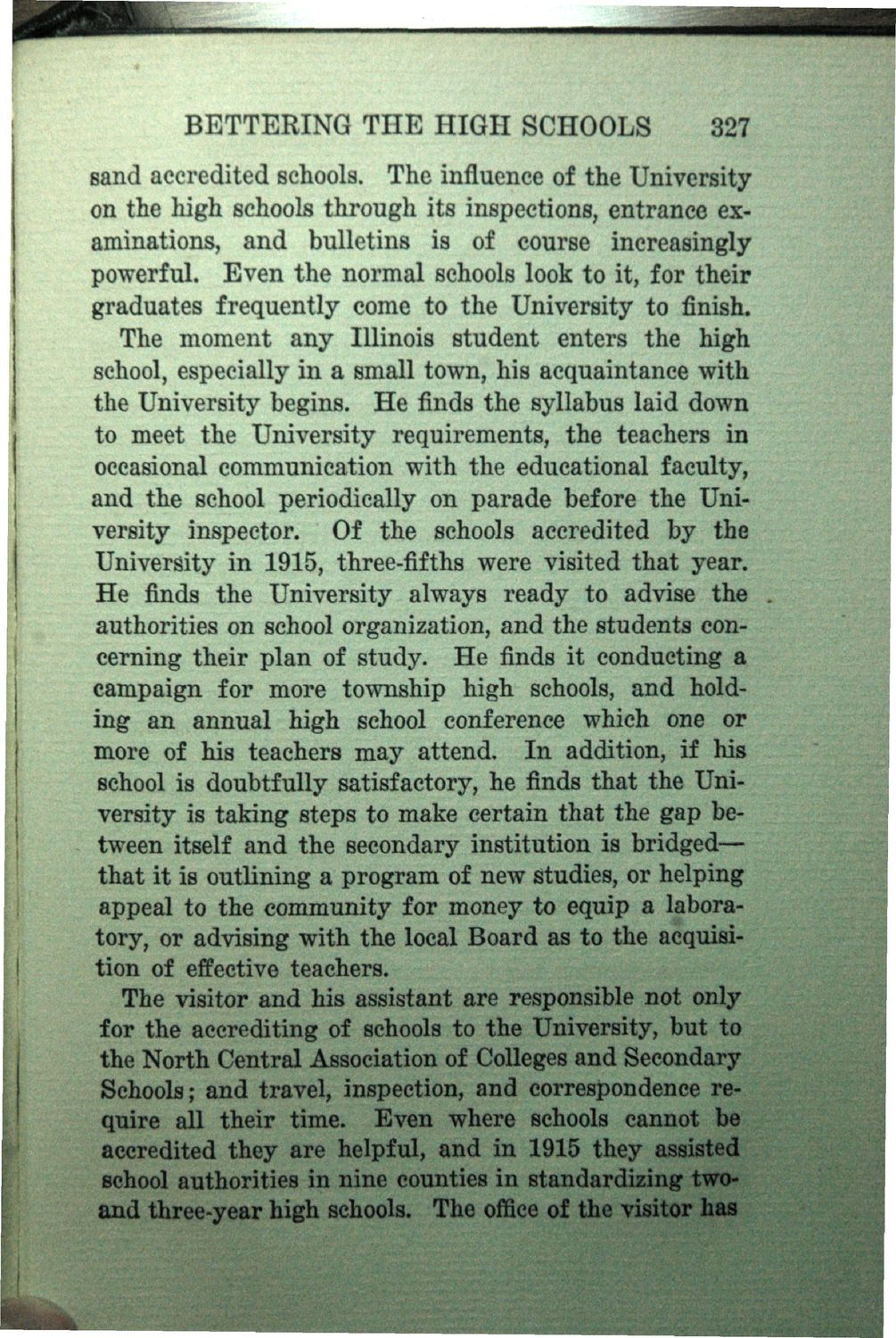| |
| |
Caption: Book - History of the University (Nevins)
This is a reduced-resolution page image for fast online browsing.

EXTRACTED TEXT FROM PAGE:
BETTERING THE HIGH SCHOOLS 327 sand accredited schools. The influence of the University on the high schools through its inspections, entrance examinations, and bulletins is of course increasingly powerful. Even the normal schools look to it, for their graduates frequently come to the University to finish. The moment any Illinois student enters the high school, especially in a small town, his acquaintance with the University begins. He finds the syllabus laid down to meet the University requirements, the teachers in occasional communication with the educational faculty, and the school periodically on parade before the University inspector. Of the schools accredited by the University in 1915, three-fifths were visited that year. He finds the University always ready to advise the authorities on school organization, and the students concerning their plan of study. He finds it conducting a campaign for more township high schools, and holding an annual high school conference which one or more of his teachers may attend. In addition, if his school is doubtfully satisfactory, he finds that the University is taking steps to make certain that the gap between itself and the secondary institution is bridged— that it is outlining a program of new studies, or helping appeal to the community for money to equip a laboratory, or advising with the local Board as to the acquisition of effective teachers. The visitor and his assistant are responsible not only for the accrediting of schools to the University, but to the North Central Association of Colleges and Secondary Schools; and travel, inspection, and correspondence require all their time. Even where sehools cannot be accredited they are helpful, and in 1915 they assisted school authorities in nine counties in standardizing twoand three-year high schools. The office of the visitor has
| |